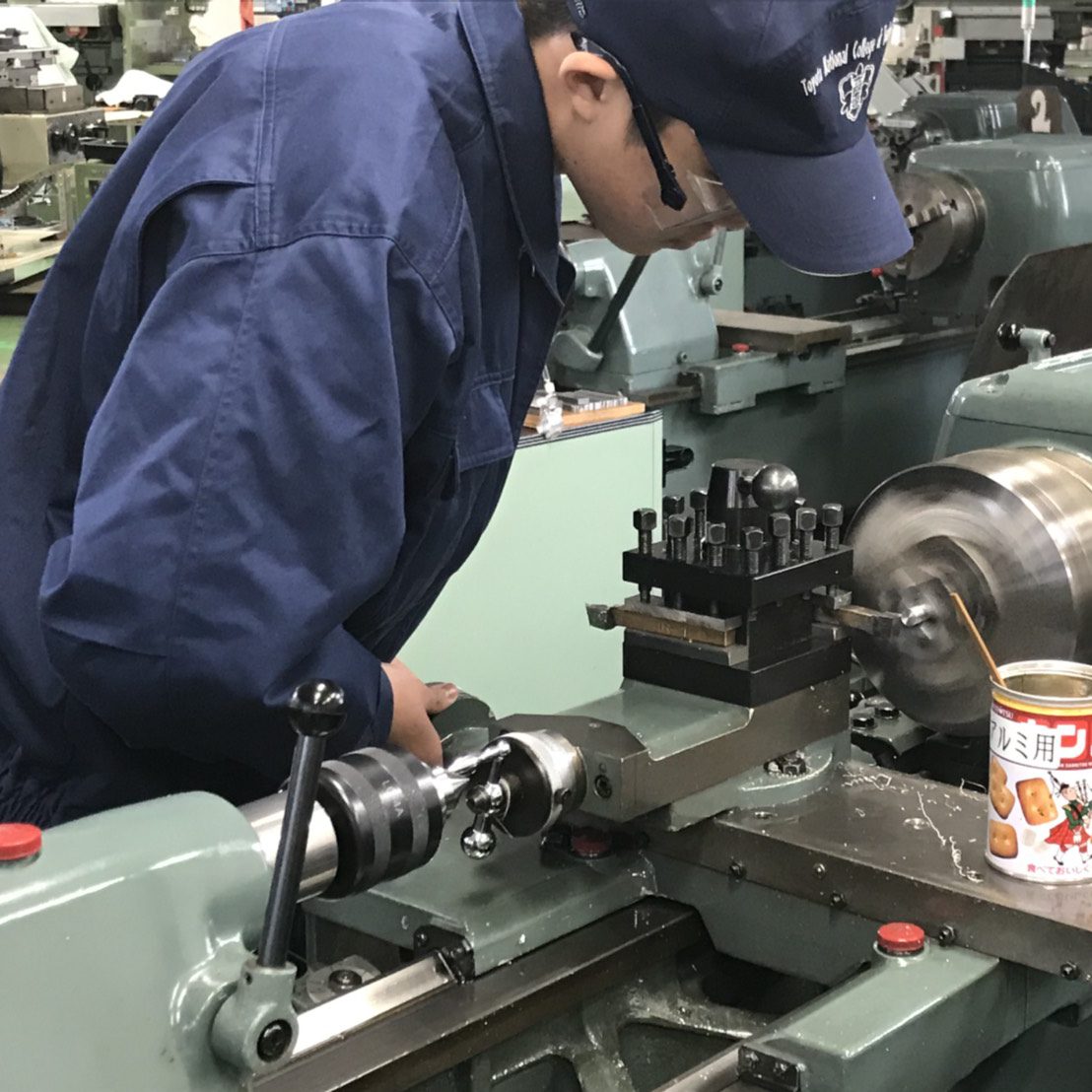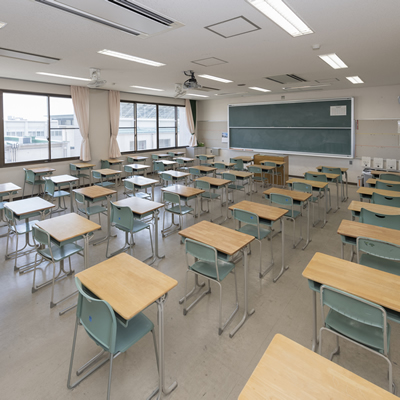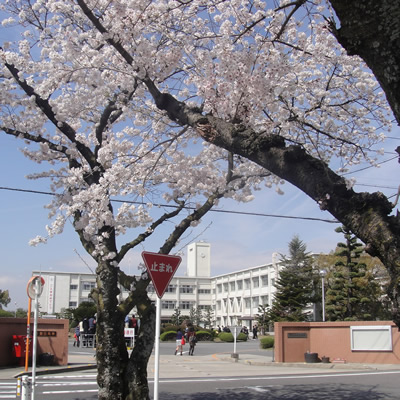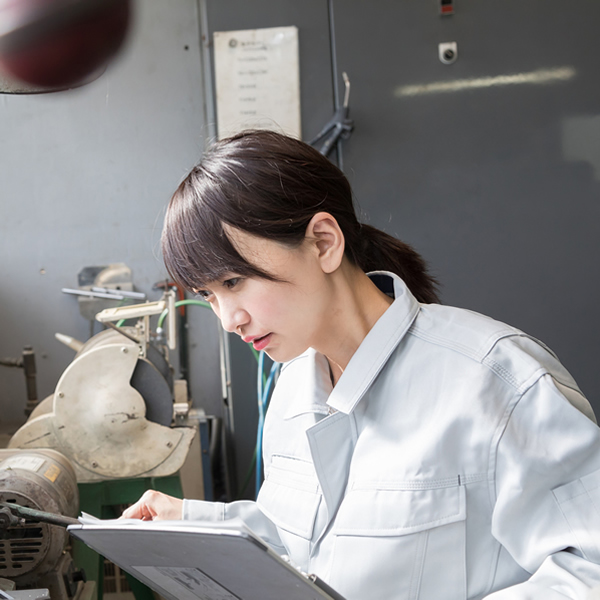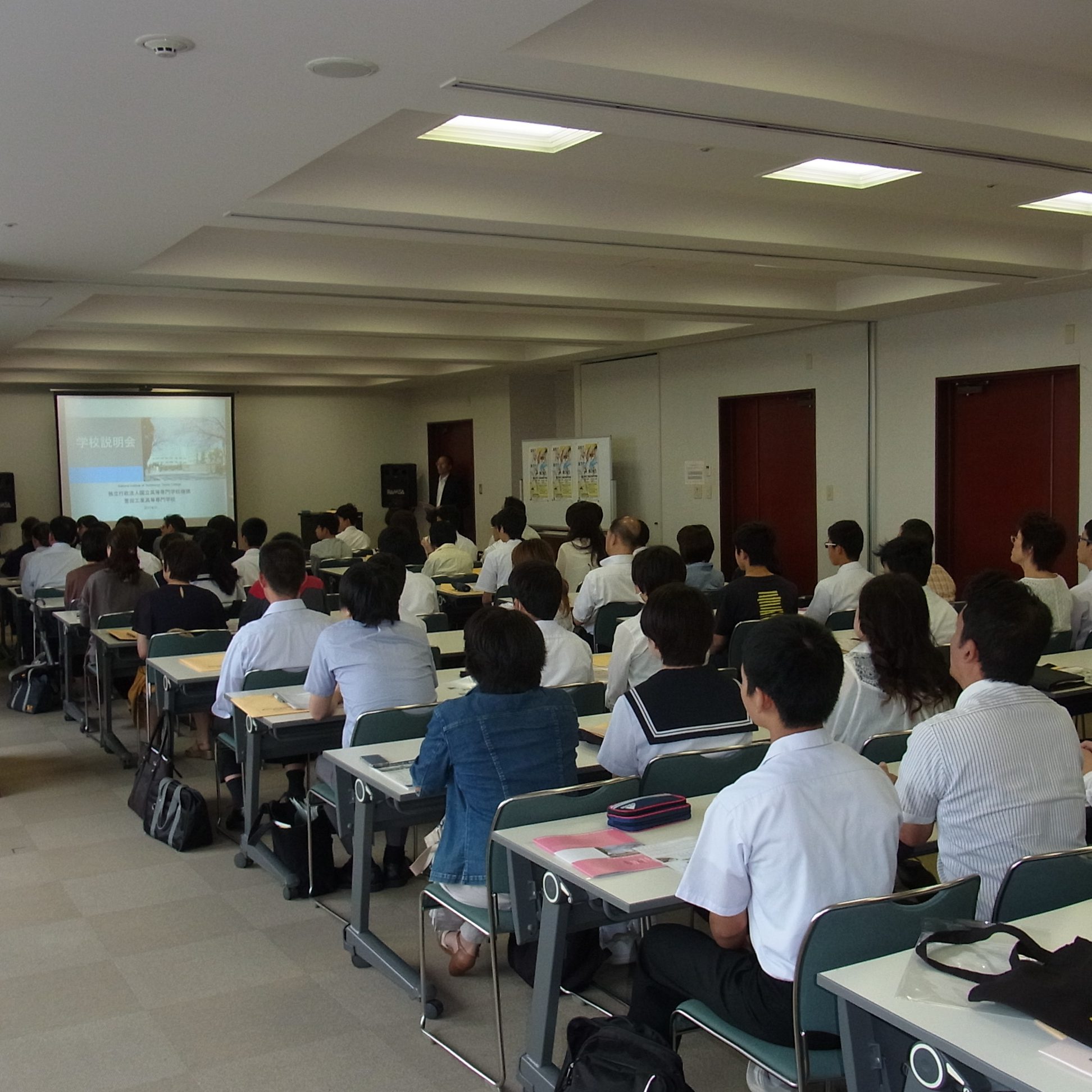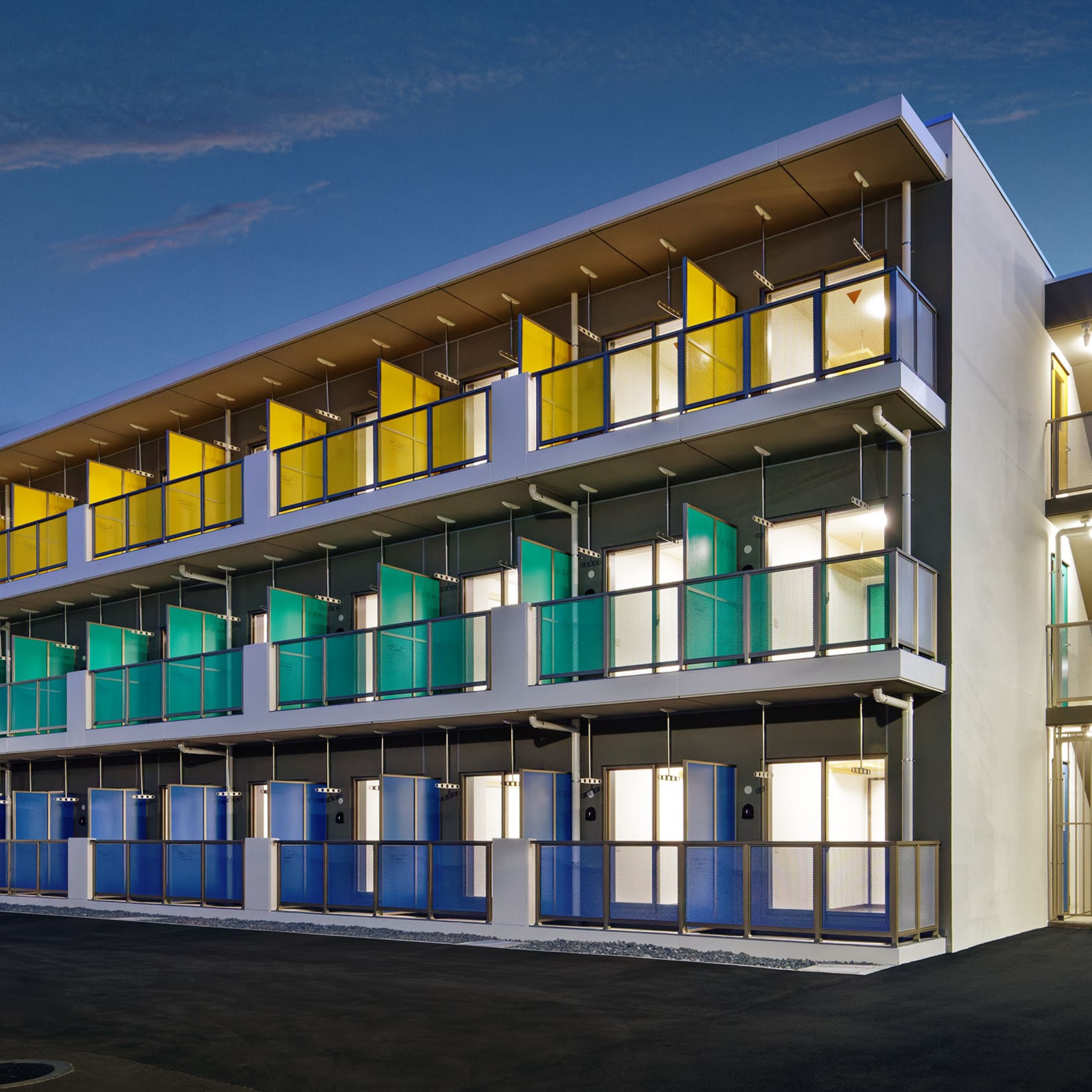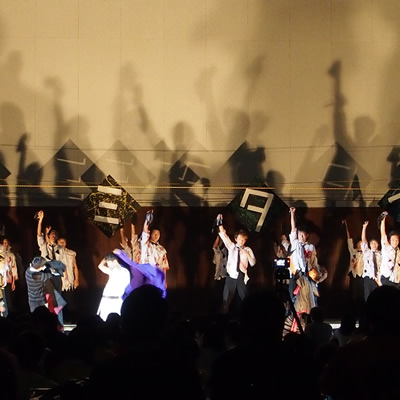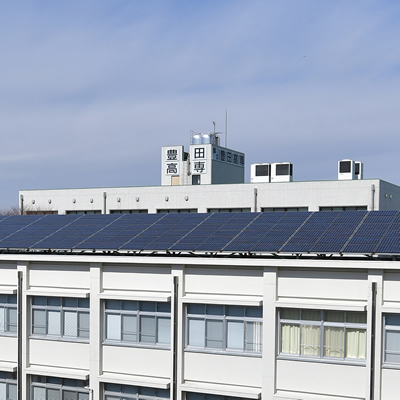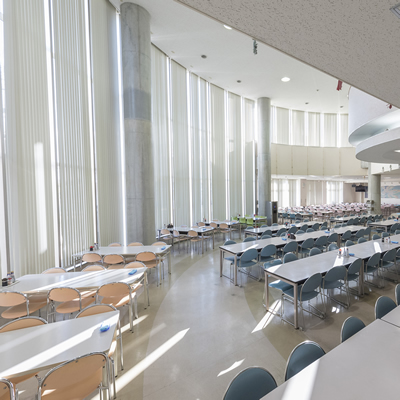Experience the research facility!
Toyota National College of Technology offers highly specialized experiments and practical training using a number of facilities and equipment. Here we publish some of them. Please take a look at Toyota National College of Technology’s proud facilities and equipment.
Facility List
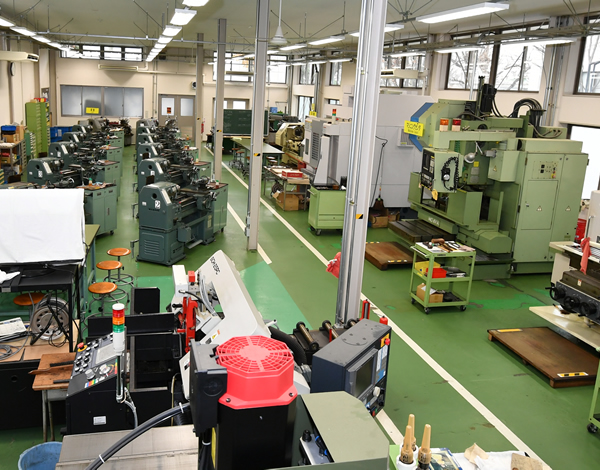
Manufacturing Center
The purpose of the Monozukuri Center is to support “manufacturing” education to nurture creative development-oriented engineers and to contribute to the enhancement and development of education and research at our school. It is also widely used in regional collaboration such as joint research with companies and public lectures. The center is equipped with a multimedia CAD/CAM/DNC system, a machining center, CNC lathes, CNC milling machines, and other equipment, all of which can be effectively used for education and research. In addition to basic practical training, mechatronics practical training, creative general practical training, engineering experiments and graduation research in the Department of Mechanical Engineering, it is also used for multi-department practical training, experiments for students in major courses, special research, and the manufacture of research equipment.

Social Collaboration and Co-creation Center
The Center for Social Collaboration and Co-Creation was established on April 1, Reiwa 7 by expanding the operations of Collaboration Research Center of Technology as a center that promotes collaboration and co-creative relationships such as joint research with private companies, local governments, universities, research institutes, etc., including neighboring regions, with the aim of contributing to the enhancement and development of education and research at our school through the creation and resolution of social issues in a wide range of ways. In addition to playing a central role in industry-academia-government collaboration, it can be widely used as a base for joint research, contract research, technical consultation, and training, and supports entrepreneurship education and startup promotion.
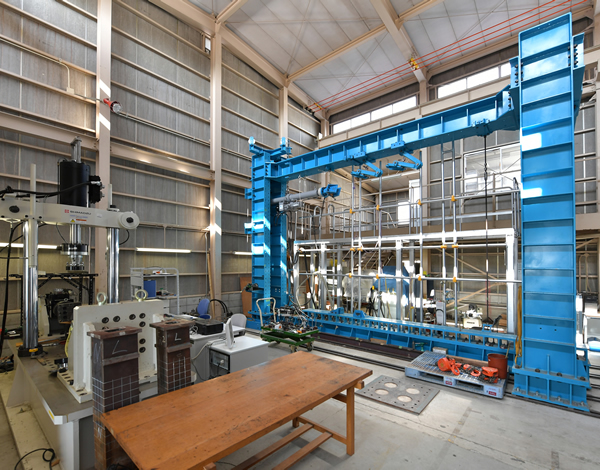
Materials and Structural Fatigue Testing Center
The Materials and Structural Fatigue Testing Center has four main types of equipment: a vibration triaxial compression tester since its establishment, a computer-controlled 300kN hydraulic servo 2-axis fatigue test system introduced in fiscal 1992, and a seismic wave vibration table equipment and a 25KN dynamic loading test system introduced in fiscal 2000.All of these facilities are used by many faculty members and students as distinctive facilities for education and research.
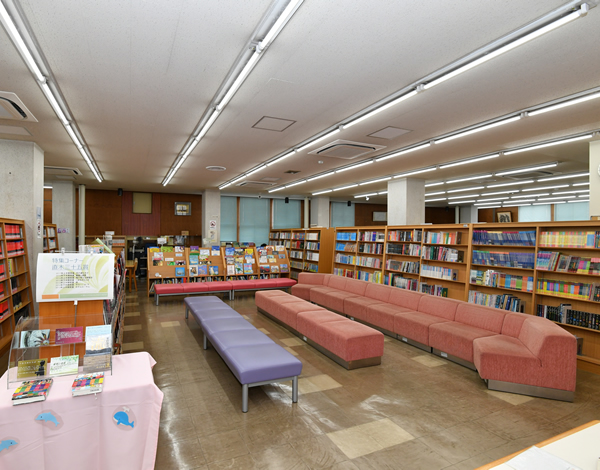
library
The library is open to the general public.
The library is located on the second floor of a separate building and has an area of 1,600 square meters and 114 seats. The library has a collection of about 150,000 books, including specialized and reference books closely related to learning at technical colleges, extensive English reading books, dictionaries, literature, and art-related books. To make students familiar with books, many Japanese books are placed on open shelves. There is also a newspaper and magazine reading corner and an audiovisual material reading booth.
Currently, we have about 38,000 extensive English reading books in our collection, which are actively used for English education at our school.
In addition, academic journals and e-books are available on campus LAN.

ICT Security Education Center
As a shared-use facility on campus, the ICT Security Education Center provides a wide range of services, from general information processing education to research support by faculty and students, e-learning environments for self-study, library information systems, and management of computer networks on campus.
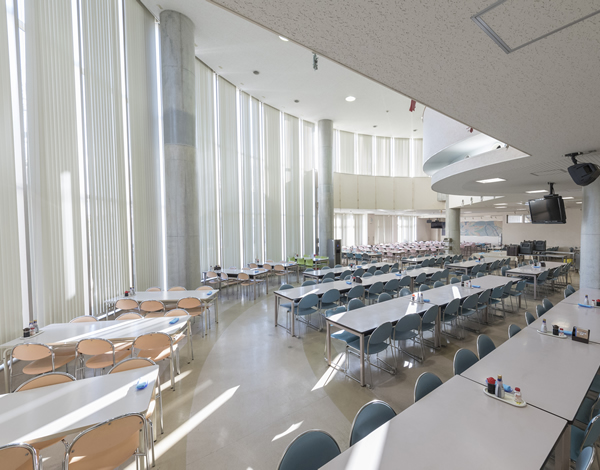
Welfare facilities
The cafeteria of the welfare facility opened in January 2000. The building has a dormitory cafeteria (329 seats) on the first floor and a general cafeteria (120 seats) on the second floor, making it a symbolic facility in the center of the campus and a new place for exchange.
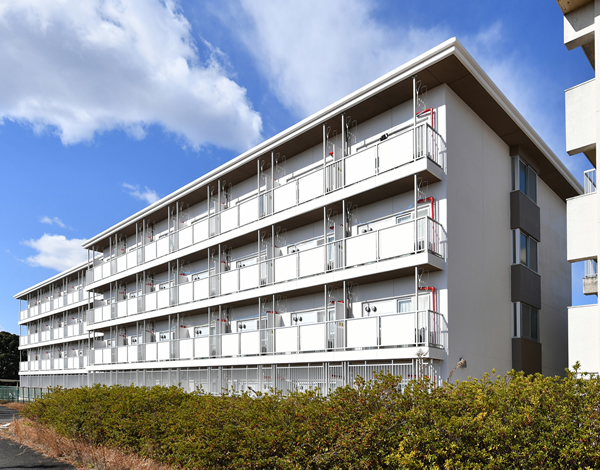
Student dormitory
At Toyota National College of Technology, dormitory life is a part of education. More than half of all students, including lower students (1st and 2nd grades) and upper students (3rd, 4th, and 5th grades), live together in dormitories. In principle, first-year students who wish to enter the dormitory can enter the dormitory. (Reiwa From the second academic year, in order to prevent the spread of the new coronavirus infection, the number of dormitory residents has been reduced, and dormitory selection has been conducted based on students who have high commuting difficulties. For students in the second year and above, the number of applicants will exceed the capacity, so the dormitory will be selected after the dormitory selection.


